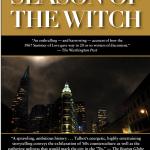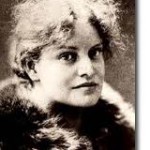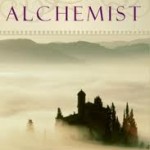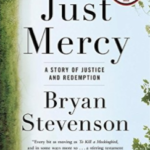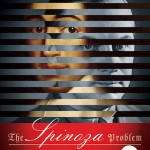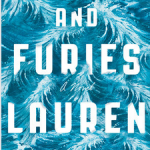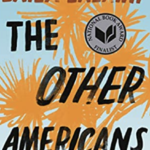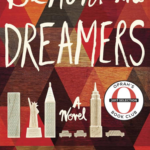April 25th, 2014 — 11:42pm
Category: FR - Fiction Romance
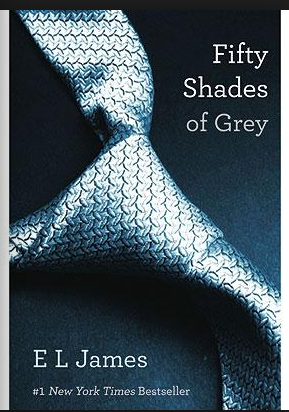 Fifty Shades of Grey by E.L, James|
Fifty Shades of Grey by E.L, James|
By the time I got around to reading this book it had sold 100 million copies in 52 languages. It was a hot best seller from the moment it burst on the scene selling 2 million copies during its first month out. The story is simple and somewhat repetitious with a thin plot. Anastasia Steele 21 year old attractive, virgin college girl with very limited sexual experience pinch-hits for her roommate who is on the college newspaper and interviews the scheduled graduation speaker. He is Christian Grey, an incredibly handsome and rich 27 year old, very successful businessman. He is obviously taken with her. He tracks her down and they begin to establish a relationship. She is very attracted to him and one might expect that we would have two people doing what comes naturally. The catch here is while he is very proficient in deflowering this girl and satisfying her sexually, he has special needs. These needs involve acting out his sadomasochistic fantasies where he is the Dominant and she is the Submissive. This involves restraining her, tying her, flogging her and much more. He has a great need to possess her. Where he differs from the individual with a sadomasochistic disorder is that he only wants to carry this out with a consenting woman and he even offers her a detailed contract where all the details and so called limits are spelled out. As they continue to interact sexually and as she contemplates if she will sign this contract, she falls in love with him and wants to please him. She hopes he will love her more than his perverse sexual needs dictate. Needless to say the book is rich in the detail of their sexual interaction. It is clearly written from a women’s point of view. Ana’s arousal is traced in great detail and her orgasms are vividly described in somewhat repetitive language. There can be no doubt that the mass appeal of this book which surely has to be mainly to women comes from the wishful identification with the experience of the main female character. It is not a stretch to understand how appealing it is for a woman to imagine a wealthy, extremely good-looking man who buys her expensive gifts and is immensely attracted to her. There can be multiple components to a woman’s sexual fantasies. One of them could be to be dominated by a desirable man. This storyline tests the limit of that fantasy. While I call this a woman’s book I am sure that I am not the only man who read it. It is part of the common male phantasy to want to dominate an extremely attractive girl, but the extent of Christian Grey’s needs could only have developed by special circumstances. (Remember Dustin Hoffman’s character in The Graduate and his relationship with Mrs. Robinson?) While the roots of these determining factors were clearly discussed in the book, they were not fully expounded upon. Perhaps these are being elaborated in more detail in the newer books of the now “trilogy” which the author has written. I will probably pass on the next two books but I have no doubt they will sell well and ultimately produce a movie which I might just take in.
You are encouraged to leave a comment -
Comment »
April 6th, 2014 — 10:03pm
Category: E- Economic, P - Political
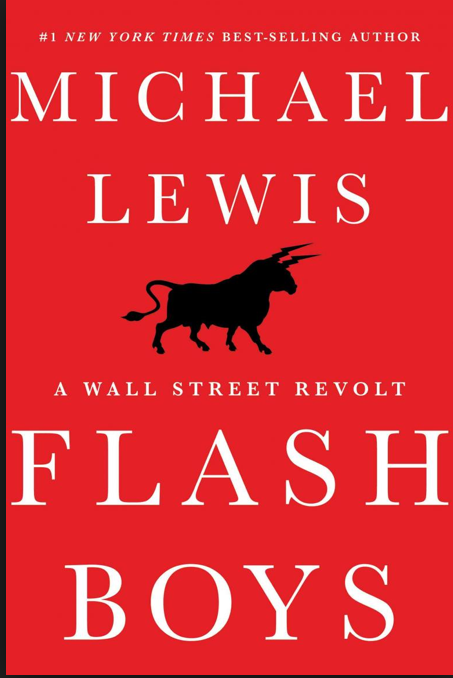 Flash Boys by Michael Lewis- This book is causing both great interest and high emotion on Wall Street since its recent release. The author, Michael Lewis, has great credentials as a reliable reporter, which he has demonstrated in several important books including best sellers Moneyball and Liar’s Poker. This book mesmerized me but to be perfectly honest, most of the time I did not understand what the author was talking about especially when he was explaining the exact details of how electronic trading really works. Apparently, according to the author, most of the traders on Wall Street also really don’t know what goes on behind the computer screen. However, that is exactly what this book is all about.
Flash Boys by Michael Lewis- This book is causing both great interest and high emotion on Wall Street since its recent release. The author, Michael Lewis, has great credentials as a reliable reporter, which he has demonstrated in several important books including best sellers Moneyball and Liar’s Poker. This book mesmerized me but to be perfectly honest, most of the time I did not understand what the author was talking about especially when he was explaining the exact details of how electronic trading really works. Apparently, according to the author, most of the traders on Wall Street also really don’t know what goes on behind the computer screen. However, that is exactly what this book is all about.
Early in the book the reader learns that millions of dollars are being spent to lay a black tube filled with fiberglass cable from Chicago to New Jersey and to make it as straight as possible. This will allow electronic signals that carry information between brokerage houses and the various stock exchanges to flow as fast as possible. One of the goals of this project is to let the people who sign up to use it be faster than all the other guys who don’t use it. However, that is not the whole story. We also learn that some brokerage firms spend lots of money to move their computer servers closer to the main stock exchange buildings in New York and New Jersey in order to shorten the travel time of the electronic messages. We are talking about increasing their speed by thousandths of a second, faster than the blink of an eye. With or without new cable there are all sorts or tricks or techniques to manipulate the speed and timing of the electronic impulses, which convey information involved in buying and selling stock. Certainly, speed really counts but things are even more complicated. Stock traders who do a lot of trades called High Frequency Traders (HFT) have special computer programs that have tricky computer maneuvers. For example, if they have a 10,000-share order they will send out a signal for an order of 100 shares. This allows the computer to figure out the current selling price and then the computer in blinding fast speed sends the rest of the order to various other exchanges and ends up making purchases a fraction of a cent better than if they didn’t have this super speed ability. It gets even more complicated as there are all sorts of commissions and bonuses per share that depend where and when the sale is made. Oh, also there are “dark pools” which are locations in cyberspace where various brokerage firms will make trades from their own clients without routing orders to the various exchanges. This saves money but doesn’t necessarily get the best price for the customers. There are 13 public stock exchanges (NY Stock Exchange, American Stock Exchange, NASDEQ and 10 more) plus 45 dark pools.
If this were just a book about computer programing and the ins and outs of the market, I would have given up on it early on. There also is a human side of this story, which is about some of the so called computer geeks that work designing these systems and making them work, as well as some of the higher ups who run the various brokerage and stock exchanges. It should be noted that many of these people earn hundreds of thousands of dollars per year and some make a few million dollars per year and those at the very top make much more. There are some heroes in this book. One in particular will be mentioned. His name is Brad Katsayama. He and a few colleagues figured out that super speed trading gives certain brokers an unfair advantage. Initially they designed a program to make the information from a trade arrive evenly at the same speed. (Needless to say this is a simplified explanation). They believed that this made for fairer business transactions. Then after many machinations they brought together a team that was dedicated to build their own stock exchange. The purpose would be to run super speed trading that would give no special advantage and no one would get special bonuses or commissions for tricky manipulations in how a block of stock was transacted in their stock exchange, which is named IEX (Investors Exchange). There were some very exciting moments as they built the exchange and waited with baited breath on the opening day to see if it would work and attract what they believed would be fair minded traders. Spoiler Alert! Goldman Sacks led the way and ultimately other firms would follow and IEX became a successful endeavor.
Lest you think that Goldman sacks is presented as one of the heroes of this book, there is a very scary situation described in the book where a man
by the name of Sergey Aleynkove is harshly sentenced to 8 years in jail for “stealing” computer code from them. He was one of those geeks who appeared to be more interested in the intricacies of the electronic trading than getting around the laws and regulations. The explanation for what he did that was shown to us was that while at Goldman Sachs he sent himself emails of the code he was working on which he kept when he left the firm. Most of what he used was open code that meant that it was available to anyone for free on the Internet and the rest of it wasn’t really usable outside of Goldman Sacks. Nevertheless they pressed charges and he was convicted. We are led to believe this is about the paranoid atmosphere when the secret world of electronic trading is being exposed.
The impression that Michael Lewis leaves us with this book is that stock market trading is mostly rigged and there is manipulation, skimming and deception. While there has been a genuine growth from which most investors profit in the long run, the everyday details are dark and dirty. They are also very difficult to understand. They are embedded in the nano second impulses that flash back and forth in the hands of the people who run our financial markets.
You are encouraged to leave a comment -
Comment »
April 2nd, 2014 — 8:09pm
Category: HI - History, P - Political
Havana Nocturne by T.J. English– 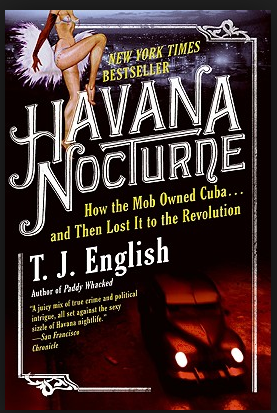 I thought that I was a little familiar with the history Cuba. I knew that Spain won its freedom from Spain in the Spanish American War. I knew that during the reign of the Cuban dictator Fulgencio Batista the United States and large U.S. corporations had a good deal and made lots of money from Cuba. I was aware in 1959 Fidel Castro and his revolutionary army basically took over the country, nationalized US companies and threw out the Americans as well as many wealthy Cubans. They established a more or less socialistic economy as Batista escaped in exile. I also had a vague awareness that prior to the revolution Havana was a very exciting city with lots of nightclubs run largely by gangsters similar to stories I heard about Las Vegas.
I thought that I was a little familiar with the history Cuba. I knew that Spain won its freedom from Spain in the Spanish American War. I knew that during the reign of the Cuban dictator Fulgencio Batista the United States and large U.S. corporations had a good deal and made lots of money from Cuba. I was aware in 1959 Fidel Castro and his revolutionary army basically took over the country, nationalized US companies and threw out the Americans as well as many wealthy Cubans. They established a more or less socialistic economy as Batista escaped in exile. I also had a vague awareness that prior to the revolution Havana was a very exciting city with lots of nightclubs run largely by gangsters similar to stories I heard about Las Vegas.
This book written by an American journalist T. J. English fills in the details about Batista, Castro and especially the very personal story of the mafia, the mob or the gangsters who in a very deliberate manner conquered the economy of this country and ruled it’s jeweled city of Havana for almost seven years. I am ashamed to admit that prior to reading this book, I had considered that there must have been some redeeming value in Batista, if the U. S. including Presidents Eisenhower and JFK had strongly supported him However, after learning about the suitcases of money that were delivered to Batista in exchange for letting the gangsters take over Havana, I was quite surprised and disappointed.
The Cuban revolution is only a small part of this story that is told in great details (with much documentation and cross referencing in the appendix at the end of the book as if that were really needed.) This book chronicles the life of gangsters, Charles Lucky Luciano and most of all Meyer Lansky. There are fascinating behind the scenes details of historical events that most of us would never have known. We learn that Lucky Luciano might have lived most of his adult life in prison if there was not a deal made with the United States Navy who had a need to catch Nazi sabatours who were operating on the NY and Brooklyn docks where Luciano had the ability to ferret out their identities. This earned him an out of jail ticket and deportation to Italy from where he then traveled to Cuba.
On the other hand, the descriptions of the life and successful business doings of Mr. Lanksy would have to be of interest, and perhaps envy of every Harvard Business School graduate although we would hope they not follow in his unscrupulous side. Lansky knew how to involve his business associates with a piece of the action so for the most part they would be content with hardly a necessary mob hit (although there were certainly a few of them described in the book). In fact, there were the inside details of some of the biggest gangster hits of all time including the notorious Albert Anastasia
The life styles and personalities of several mobsters are describes in detail as there was a quite a large number of them who came to Cuba to seek their fortunes. Particularly prominent along with Luciano and Lanksy was Santos Trafficante Jr. who in addition to having his hooks in Havana controlled activities in Tampa, Florida. Their backgrounds, personalities and relationships with each other are all dissected. For the most part their motive was clear, money-lots of it. They saw Cuba, as a fertile field for exploiting. Havana was an immensely attractive playground for he rich as well as the wannabee rich, all who were drawn to this glamorous city. There also was an account of Frank Sinatra’s acquaintance with the mob and there even was a story about something like an orgy in which a young US Senator JFK was a participant.
English’s writing style is relatively straightforward. The references are in the back of the book but the sequences of events and cast of characters were clearly rolled out as was the various nefarious schemes. At times English would throw in a colorful metaphor such as. “ Throughout the month of December, the island seethed like a bitch with a low grade fever.” Perhaps the only thing that was not clear to me is why the influence of the exiled Cubans mostly concentrated in Florida, to this day continues to prevent the US from lifting the Cuban embargo and developing a reasonable relationship with the Cuban people. Now that Castro himself is in his waning days and island itself as we observed during a recent trip is experimenting with various forms of capitalism, it may be a short time before that occurs. It will be interesting to see when that happens if the mob will creep back into Havana in the dead of night.
You are encouraged to leave a comment -
Comment »
March 16th, 2014 — 3:11pm
Category: MHP - Mental Health/Psychiatry
 Thank You For Your Service by David Finkel– This is a nonfiction account, which reads more like a novel, of the story what happens to the soldiers who return from Iraq and Afghanistan after being mentally injured in combat. The author David Finkel previously wrote a well-received book, The Good Soldier, about his observations as an embedded war correspondent. Now he closely follows a group of soldiers most of whom know each other as they came home to their families, some with physical injuries but all with post traumatic stress disorder (PTSD). He writes in the third person and there is no trace of the author’s actual presence although it is like he is a fly on the wall, reporting dialogue in their homes, bedrooms, etc. and in the various treatment programs, which attempt to rehabilitate them. The book takes us back to their combat experiences in foreign countries as well as to their battles with their spouses and with their demons. This is a close up view that can get you inside the head of these men and their spouses. It is as if you were the trusted therapist who was being told all. In fact, clinicians in training or those wanting to get experience with this population of people, psychologically impaired by war would certainly benefit by reading this book. There was clear insight into the thinking of all the subjects but there was no simple answer how to treat them or how they can live with the sequelae of this war experience.
Thank You For Your Service by David Finkel– This is a nonfiction account, which reads more like a novel, of the story what happens to the soldiers who return from Iraq and Afghanistan after being mentally injured in combat. The author David Finkel previously wrote a well-received book, The Good Soldier, about his observations as an embedded war correspondent. Now he closely follows a group of soldiers most of whom know each other as they came home to their families, some with physical injuries but all with post traumatic stress disorder (PTSD). He writes in the third person and there is no trace of the author’s actual presence although it is like he is a fly on the wall, reporting dialogue in their homes, bedrooms, etc. and in the various treatment programs, which attempt to rehabilitate them. The book takes us back to their combat experiences in foreign countries as well as to their battles with their spouses and with their demons. This is a close up view that can get you inside the head of these men and their spouses. It is as if you were the trusted therapist who was being told all. In fact, clinicians in training or those wanting to get experience with this population of people, psychologically impaired by war would certainly benefit by reading this book. There was clear insight into the thinking of all the subjects but there was no simple answer how to treat them or how they can live with the sequelae of this war experience.
The known connection between TBI ((Traumatic Brain Injury) and PTSD is repeatedly demonstrated although it is not invariable. The soldiers bring back tremendous guilt for what they have seen and done which is not easily alleviated by a rational analysis. Seeing buddies maimed and violently killed in a split second, no matter how conscientiously they tried to hold their fellow soldier’s body together while waiting for a medic or intellectually knowing they had no realistic way to avoid these events does very little to mitigate their guilt. One soldier was faced with an enemy firing a deadly weapon at him while holding a 3-year-old child in his arms. It was a self-preservation act to fire his own weapon and kill his enemy and the child but nevertheless the guilt continues to haunt him. It should not be surprising that the families of the wounded warriors also experience emotional damage. This pain is not only psychological but also physical in the form of what at times is severe domestic violence. There is also the suggestion that the participants in today’s volunteer army may be more likely to have had some emotional instability prior to enlisting. There are no statistics given to support this nor does this diminish the responsibility that we have to the all the heroes whom we meet in this book.
The undercurrent of this book is the subject of suicide. Such thoughts lurk in a large number of these injured soldiers and there are numerous examples of serious contemplations to end their own life with some cases where they carried out this deed. I well remember following the rising statistics several years ago as the number of suicides among active duty soldiers and veterans gradually increased until they were more than the civilian population and then ultimately exceeded the number of combat deaths. This book illustrates the stories behind these numbers by not only recounting the suicidal thoughts and near acting out of them by some of the subjects of the book but also by describing a special conference call held on a daily basis. This was the meeting run by a high ranking General linked to military bases around the world during which every suicide committed by a soldier was reviewed. At one point this was more than 22/day. The goal was the valiant but obviously unsuccessful effort to extract suicide prevention measures from this deadly experience to significantly eliminate this deadly situation.. Although not mentioned in this book, this was during a time that many people including this writer were advocating that families of soldiers who suicide should receive an official letter of condolence by the US President which is done for every fallen soldier and which was not happening at that time.
I came away away from this book hoping that the emotional toll that warriors of war will pay be factored in along with the loss of life and limb, when anyone on this planet contemplates actions that will lead to armed hostilities.
You are encouraged to leave a comment -
Comment »
March 9th, 2014 — 7:47pm
Category: FG - Fiction General
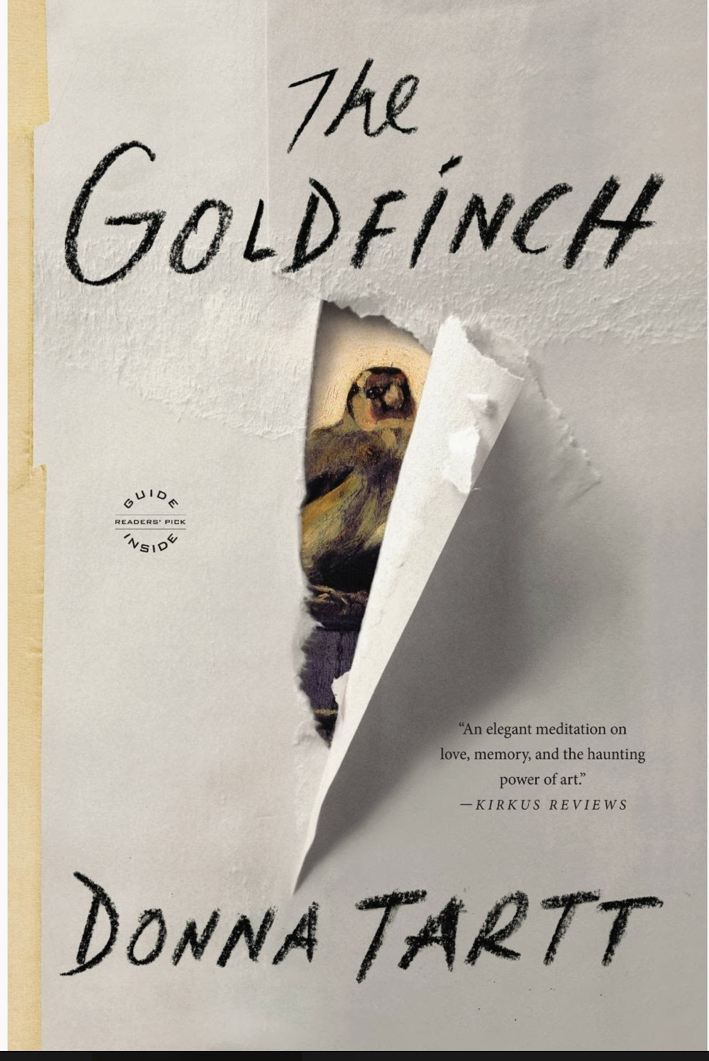 GOLDFINCH by Donna Tartt– I chose to read this book shortly after it emerged on the NY Times Best seller list and I read that people were overcrowding the Frick Museum in New York City where the Goldfinch painting by Carel Fairitus was being exhibited because it was the subject of this new popular book. For some reason that struck my fancy and I downloaded it on my iPod. Now having having completed the book, I read about the author and learned that she took 10 years between this and her last well received novel to complete this book. Also, the critics are comparing her style to Charles Dickens (who was never exactly my cup of tea). Having said this and feeling the book was definitely too long, I will give the author credit for an interesting plot and some good in-depth character development, which is always appealing to me. The novel is told in the first person which is an accepted literary mechanism but it seemed somewhat artificial to me when the writer in this case is describing exquisite details, memories, dialogue etc. that no one could possibly recall. The voice of this novel is Theo Decker. He is an early adolescent who is visiting a museum with his divorced mother when there is a tremendous bomb explosion. Young Theo finds himself alone in one part of the decimated museum with a dying old man who gives him his valuable ring and the painting (the novel namesake) which has survived the blast barely unscathed. His mother has died in the explosion and a wealthy Manhattan family of a school friend takes in Theo. Theo follows the directions of the dying old man from the museum and finds his relative, a kindly middle-aged man named Hobie. He gives him the ring and is taken under wing by him and taught all about furniture restoration which is his trade and profession. Throughout the book there are more details about furniture restoration than you would ever want to know. I am sure it is metaphoric or symbolic in some way, which I never understood. Theo meets Pippa, the granddaughter of the older man from the museum who is staying with Hobie while recovering from her injuries from the explosion. Theo had briefly seen her before the blast and was initially fascinated by her and subsequently develops a great love for her despite the fact that she is sent to school in another country and only periodically visits Hobie. Theo’s father then appears on the scene and takes him to live with him and his girlfriend in a run down area in Las Vegas. Theo all this time is hiding the famous painting as he tried to do throughout most of the book. Theo meets a young man with a Russian background by the name of Boris who becomes his closest friend and they spend high school years together. They will reunite later in the book. These two young men use a tremendous amount of drugs and alcohol throughout the book. We see the acute effects on them but for some reason, which didn’t make sense to me, we don’t see the deterioration and effects of large amounts of the substances, which they used. Theo and Boris have and thrilling adventure in Europe which has to do with the painting. As mentioned, all the characters with whom we spend time are consistent and well developed. The author obviously spent much time thinking about them and how to present them to us. She also is trying to share with us her philosophy of life. She not only demonstrates this in her storyline but also finds places in the novel to expound in great detail. No place is this more apparent than at the conclusion of the book where she goes on for what seems like numerous pages reviewing the lesson of life that Theo has learned. It didn’t work for me but remember I didn’t love Charles Dickens.
GOLDFINCH by Donna Tartt– I chose to read this book shortly after it emerged on the NY Times Best seller list and I read that people were overcrowding the Frick Museum in New York City where the Goldfinch painting by Carel Fairitus was being exhibited because it was the subject of this new popular book. For some reason that struck my fancy and I downloaded it on my iPod. Now having having completed the book, I read about the author and learned that she took 10 years between this and her last well received novel to complete this book. Also, the critics are comparing her style to Charles Dickens (who was never exactly my cup of tea). Having said this and feeling the book was definitely too long, I will give the author credit for an interesting plot and some good in-depth character development, which is always appealing to me. The novel is told in the first person which is an accepted literary mechanism but it seemed somewhat artificial to me when the writer in this case is describing exquisite details, memories, dialogue etc. that no one could possibly recall. The voice of this novel is Theo Decker. He is an early adolescent who is visiting a museum with his divorced mother when there is a tremendous bomb explosion. Young Theo finds himself alone in one part of the decimated museum with a dying old man who gives him his valuable ring and the painting (the novel namesake) which has survived the blast barely unscathed. His mother has died in the explosion and a wealthy Manhattan family of a school friend takes in Theo. Theo follows the directions of the dying old man from the museum and finds his relative, a kindly middle-aged man named Hobie. He gives him the ring and is taken under wing by him and taught all about furniture restoration which is his trade and profession. Throughout the book there are more details about furniture restoration than you would ever want to know. I am sure it is metaphoric or symbolic in some way, which I never understood. Theo meets Pippa, the granddaughter of the older man from the museum who is staying with Hobie while recovering from her injuries from the explosion. Theo had briefly seen her before the blast and was initially fascinated by her and subsequently develops a great love for her despite the fact that she is sent to school in another country and only periodically visits Hobie. Theo’s father then appears on the scene and takes him to live with him and his girlfriend in a run down area in Las Vegas. Theo all this time is hiding the famous painting as he tried to do throughout most of the book. Theo meets a young man with a Russian background by the name of Boris who becomes his closest friend and they spend high school years together. They will reunite later in the book. These two young men use a tremendous amount of drugs and alcohol throughout the book. We see the acute effects on them but for some reason, which didn’t make sense to me, we don’t see the deterioration and effects of large amounts of the substances, which they used. Theo and Boris have and thrilling adventure in Europe which has to do with the painting. As mentioned, all the characters with whom we spend time are consistent and well developed. The author obviously spent much time thinking about them and how to present them to us. She also is trying to share with us her philosophy of life. She not only demonstrates this in her storyline but also finds places in the novel to expound in great detail. No place is this more apparent than at the conclusion of the book where she goes on for what seems like numerous pages reviewing the lesson of life that Theo has learned. It didn’t work for me but remember I didn’t love Charles Dickens.
You are encouraged to leave a comment -
1 comment »
February 16th, 2014 — 12:09pm
Category: FG - Fiction General, T - Recommended for Teenagers, Uncategorized
 I decided to read this book because I had heard it was a very emotional and wonderful book from multiple people. This book is very inspiring and very different because it is written thoughtfully and caring through the eyes of someone you don’t see every day. Auggie, the main character, who feels like any other ordinary little boy inside, isn’t seen the same way by everybody else because he has a deformed face. Auggie has always been homeschooled and this book is about Auggie’s journey through his first year attending a real school—middle school. It is probably bad enough to be a new kid, let alone having a deformed face and being at a real school for the first time in your life—well imagine it would be like for Auggie.
I decided to read this book because I had heard it was a very emotional and wonderful book from multiple people. This book is very inspiring and very different because it is written thoughtfully and caring through the eyes of someone you don’t see every day. Auggie, the main character, who feels like any other ordinary little boy inside, isn’t seen the same way by everybody else because he has a deformed face. Auggie has always been homeschooled and this book is about Auggie’s journey through his first year attending a real school—middle school. It is probably bad enough to be a new kid, let alone having a deformed face and being at a real school for the first time in your life—well imagine it would be like for Auggie.
What I really liked about Wonder is that the author, R.J. Palaciodid a great job of capturing Auggie’s perspective and she also showed the perspectives of other people in Auggie’s life by telling the story from the views of other people in Auggie’s life. I recommend this book because it really makes the sadness, happiness, enjoyment, pleasure, and emotion come to life in the reader’s eyes and in the character’s eyes. I recommend this book to people who like to see real life—both the hardships and the happy moments.
You are encouraged to leave a comment -
1 comment »
February 11th, 2014 — 1:09am
Category: B - Biography, HI - History, P - Political
The Bully Pulpit: Theodore Roosevelt, William Howard Taft and the Golden Age of Journalism- by Doris Kearns Goodwin I always thought that I was fairly well educated in American history but now after encountering this magnificent book I realize how little I knew about two great American presidents, Teddy Roosevelt and William Howard Taft. Doris Kearns Goodwin, more recently known for Team of Rivals about the presidency of Abraham Lincoln, chose with good reason to couple Roosevelt and Taft in this massive writing project. My electronic reader had about 4870 pages (this will vary with the size of the screen and font) and Amazon showed the hard cover version having 910 pages including the index. In fact by my count almost 15% of the book were footnotes and the index, which is keeping with the scholarly approach of Ms. Goodwin. This does not mean that this is a slow or dry read. To the contrary, the reader is drawn into the lives of these fascinating men and the time period in which they were making American history. I had to remind myself that I was not reading a novel. Quite early in the book Ms. Kearns has chosen to demonstrate that these two men had become very good friends and in fact Roosevelt was of prime importance in allowing Taft to follow him as President after his two terms. But shortly after Taft became President, there occurred a rift between the two that essentially at one point made them bitter enemies. The book exams each of their lives and follows their trajectories. This is done by alternating chapters that shows in depth the various stages of their lives. In the course of seeing their individual assents to the top, we learn they became friends, colleagues and the nature of the extremely close relationship that developed. Ultimately we also were able to follow the lives of these two men and their careers, which is the story of the progressive movement in the United States. It also tells the amazing story of Sam McClure and the muckraker journalists. In a world where there was no mass media, no radio, television or Internet; a magazine by the name of McClure’s Magazine was extremely popular. The magazine evolved from the leading literary magazine to one that provided extensive investigations and in-depth exposes, which led to political and social changes in the regulation by the government of several monopolistic industries. Some of the respected authors and journalists who wrote for McClure include Robert Louis Stevenson, Rudyard Kipling, and Sir Arthur Conan Doyle. When McClure moved to important political issues his authors included Ida Tarbell who told the story behind John Rockefeller and the Standard Oil monopoly, Ray Baker who wrote about the Right to Work and the terrible treatment of those who attempted to organize labor and Lincoln Steffens who was best known for his writing about political corruption. There was also a discussion about the well known muckraker Upton Sinclair whose novel The Jungle told of the horrors of the meatpacking industry. It is most striking how these writers not only had great impact on the public but also how receptive Teddy Roosevelt was to meet them in person and learn first hand of their investigations. This all led to the major reforms that were started by Roosevelt and carried forth by Taft and how Congress was pressured to respond with the needed legislation. In order to appreciate the depth and insight that Doris Kearns Goodwin was able to achieve about these two Presidents and the events of the day, you have to understand the sources, which she used. As would be expected, there are numerous quotes from the newspapers of that time which followed the contemporary political events and personalities. The personal method for communication was letter writing. A great deal of the personal and official correspondence of these figures has been preserved. There also are available to historians and writers, the diaries of many of them as well as those of people close to them which often reflect the details of events as well as the emotional tone, which occurred in various interactions. Eventually many of the key players wrote autobiographies and others wrote biographies about them. Kearns and her fact gathering team pieced things together so the book read like a well-written novel I imagine that different readers will come away with varied impressions, particularly about these two U.S Presidents. It does seem that I now know more about them than I do about many important people in the news today and probably more than I do about many everyday people with whom I interact. As much as I admire Teddy Roosevelt and appreciate his accomplishments and determination to do what he believed was right for this country (and was subsequently proven to be correct), I also appreciate his shortcomings. He became a national hero when he led, the Rough Riders into Cuba to needlessly risk his life and others which was more likely a personal ego trip. His break with his very close friend William Howard Taft was clearly his doing because he felt slighted for clearly insignificant reasons. Even his formation of the ill-fated Bull Moose Party which cost Taft the chance to serve a second term seemed to be another ego trip. On the other hand, Taft came across to be a very sincere person who not only cared about the people he served but had the ability to feel empathy for the individuals in his life including Roosevelt. It is ironic that Taft who would have chosen being Chief Justice of the Supreme Court over being president, which he probably never really wanted to be, never-the-less accomplished so much in his one term as president and then fortuitously had a chance to serve as Chief Justice in his later years. These are just a few samplings of the type of insights you may get as you read about these men and the history of their times.
I always thought that I was fairly well educated in American history but now after encountering this magnificent book I realize how little I knew about two great American presidents, Teddy Roosevelt and William Howard Taft. Doris Kearns Goodwin, more recently known for Team of Rivals about the presidency of Abraham Lincoln, chose with good reason to couple Roosevelt and Taft in this massive writing project. My electronic reader had about 4870 pages (this will vary with the size of the screen and font) and Amazon showed the hard cover version having 910 pages including the index. In fact by my count almost 15% of the book were footnotes and the index, which is keeping with the scholarly approach of Ms. Goodwin. This does not mean that this is a slow or dry read. To the contrary, the reader is drawn into the lives of these fascinating men and the time period in which they were making American history. I had to remind myself that I was not reading a novel. Quite early in the book Ms. Kearns has chosen to demonstrate that these two men had become very good friends and in fact Roosevelt was of prime importance in allowing Taft to follow him as President after his two terms. But shortly after Taft became President, there occurred a rift between the two that essentially at one point made them bitter enemies. The book exams each of their lives and follows their trajectories. This is done by alternating chapters that shows in depth the various stages of their lives. In the course of seeing their individual assents to the top, we learn they became friends, colleagues and the nature of the extremely close relationship that developed. Ultimately we also were able to follow the lives of these two men and their careers, which is the story of the progressive movement in the United States. It also tells the amazing story of Sam McClure and the muckraker journalists. In a world where there was no mass media, no radio, television or Internet; a magazine by the name of McClure’s Magazine was extremely popular. The magazine evolved from the leading literary magazine to one that provided extensive investigations and in-depth exposes, which led to political and social changes in the regulation by the government of several monopolistic industries. Some of the respected authors and journalists who wrote for McClure include Robert Louis Stevenson, Rudyard Kipling, and Sir Arthur Conan Doyle. When McClure moved to important political issues his authors included Ida Tarbell who told the story behind John Rockefeller and the Standard Oil monopoly, Ray Baker who wrote about the Right to Work and the terrible treatment of those who attempted to organize labor and Lincoln Steffens who was best known for his writing about political corruption. There was also a discussion about the well known muckraker Upton Sinclair whose novel The Jungle told of the horrors of the meatpacking industry. It is most striking how these writers not only had great impact on the public but also how receptive Teddy Roosevelt was to meet them in person and learn first hand of their investigations. This all led to the major reforms that were started by Roosevelt and carried forth by Taft and how Congress was pressured to respond with the needed legislation. In order to appreciate the depth and insight that Doris Kearns Goodwin was able to achieve about these two Presidents and the events of the day, you have to understand the sources, which she used. As would be expected, there are numerous quotes from the newspapers of that time which followed the contemporary political events and personalities. The personal method for communication was letter writing. A great deal of the personal and official correspondence of these figures has been preserved. There also are available to historians and writers, the diaries of many of them as well as those of people close to them which often reflect the details of events as well as the emotional tone, which occurred in various interactions. Eventually many of the key players wrote autobiographies and others wrote biographies about them. Kearns and her fact gathering team pieced things together so the book read like a well-written novel I imagine that different readers will come away with varied impressions, particularly about these two U.S Presidents. It does seem that I now know more about them than I do about many important people in the news today and probably more than I do about many everyday people with whom I interact. As much as I admire Teddy Roosevelt and appreciate his accomplishments and determination to do what he believed was right for this country (and was subsequently proven to be correct), I also appreciate his shortcomings. He became a national hero when he led, the Rough Riders into Cuba to needlessly risk his life and others which was more likely a personal ego trip. His break with his very close friend William Howard Taft was clearly his doing because he felt slighted for clearly insignificant reasons. Even his formation of the ill-fated Bull Moose Party which cost Taft the chance to serve a second term seemed to be another ego trip. On the other hand, Taft came across to be a very sincere person who not only cared about the people he served but had the ability to feel empathy for the individuals in his life including Roosevelt. It is ironic that Taft who would have chosen being Chief Justice of the Supreme Court over being president, which he probably never really wanted to be, never-the-less accomplished so much in his one term as president and then fortuitously had a chance to serve as Chief Justice in his later years. These are just a few samplings of the type of insights you may get as you read about these men and the history of their times.
You are encouraged to leave a comment -
Comment »
January 19th, 2014 — 10:45pm
Category: AM - Autobiography or Memoir, H - Humor
Mandela Was Late by Peter Mehlman  – I picked this book up while in the middle of the quite long although certainly not tedious Bully Pulpit – soon to be reviewed here. The goal was to read something humorous and light during breaks from the other book. Well, it is certainly light and the chapters are conveniently succinct, sometimes just a few pages. Maybe his chapters are short because that is the way you have to write when you make a pitch for a TV program, which is what this guy does for a living. In fact, I chose the book because the author is proclaimed as a writer and Executive Producer of Seinfeld for nearly all of its nine-year run and is noted as the person coining such terns as “spongeworthy” and “yada yada.” Early in the book I learn that not only was he a key writer for one of my favorite TV shows but he is a New Yorker transplanted to Los Angeles but always appreciating New York as a native when he visits there. I thought I might be able to identify with that state of mind or even the names of all the Los Angeles streets and restaurants which he mentions, most of which I know as a New Yorker transplanted to LA myself. However, I didn’t find the book particularly humorous or enlightening. The author seems to be writing about his life but as far as I can see all he does is pick up checks for residuals from the Seinfeld Show, write scripts for new sitcoms that sometimes get bought but hardly ever get made or if they get made they barely last. Not that there is anything wrong with that. He is single and we really don’t see any meaningful relationships in his life. Not that there is anything wrong with that either. Nevertheless I tried to relate to his youth in Queens in NYC (I am from Brooklyn but that should be close enough) when he tried to figure out the meaning of the number “69”). Maybe I have aged out of the demographic for this book. It may be a fortyish thing.
– I picked this book up while in the middle of the quite long although certainly not tedious Bully Pulpit – soon to be reviewed here. The goal was to read something humorous and light during breaks from the other book. Well, it is certainly light and the chapters are conveniently succinct, sometimes just a few pages. Maybe his chapters are short because that is the way you have to write when you make a pitch for a TV program, which is what this guy does for a living. In fact, I chose the book because the author is proclaimed as a writer and Executive Producer of Seinfeld for nearly all of its nine-year run and is noted as the person coining such terns as “spongeworthy” and “yada yada.” Early in the book I learn that not only was he a key writer for one of my favorite TV shows but he is a New Yorker transplanted to Los Angeles but always appreciating New York as a native when he visits there. I thought I might be able to identify with that state of mind or even the names of all the Los Angeles streets and restaurants which he mentions, most of which I know as a New Yorker transplanted to LA myself. However, I didn’t find the book particularly humorous or enlightening. The author seems to be writing about his life but as far as I can see all he does is pick up checks for residuals from the Seinfeld Show, write scripts for new sitcoms that sometimes get bought but hardly ever get made or if they get made they barely last. Not that there is anything wrong with that. He is single and we really don’t see any meaningful relationships in his life. Not that there is anything wrong with that either. Nevertheless I tried to relate to his youth in Queens in NYC (I am from Brooklyn but that should be close enough) when he tried to figure out the meaning of the number “69”). Maybe I have aged out of the demographic for this book. It may be a fortyish thing.
You are encouraged to leave a comment -
Comment »
December 16th, 2013 — 11:44am
Category: FG - Fiction General
 Serena by Ron Rash– In a recent book review of the best seller Gone Girl , I noted that despite that book being a very exciting mystery, there was a paucity of information about the background and psychological make up of the two protagonists. Similarly, Serena offers us two very strong characters, Serena and her husband Pemberton, with an interesting but certainly not a page turning, edge of your seat mystery. There is no significant in-depth backstory that really allows us to understand the characters and why they are who they are and how they got there. This certainly does not have to be the mission of every novel but without it we have to evaluate what have we been given? In this case it is an insight into the lives of the mostly men and some women who cut, sawed and hacked their way across the Appalachian mountains of North Carolina, Tennessee and surrounding areas in the late 1920s and early 30s’ while the country was in a depression. We came to appreciate the hardship and, at times, danger to life and limb that these lumbermen experienced. We get a glimpse at the movement to develop a national park system and the conflict with the entrepreneurs who were buying up the land to take the trees and minerals while essentially leaving it bare. We also meet a unique married couple who are not only the bosses of a company that is engaged in these practices but who also embody a mean spirited perhaps “evil” nature. They will think nothing of endangering their workers, manipulating and lying to potential business partners and doing whatever has to be done to achieve their ends. This includes a willingness to murder anyone. Thus the book in one sense is a morality play with the workers talking among themselves acting like a Greek chorus highlighting the code of ethics or rather lack of them which are being acted out. Serena, herself emerges as a person who burnt her bridges behind her (although we don’t quite really understand what they were made of) and would do anything to be the timber baroness of the US and then of Brazil. Her singlemindedness becomes frightening and is made of the stuff that would make her an ideal role for any great actress to undertake when Serena , the movie,is ultimately made.
Serena by Ron Rash– In a recent book review of the best seller Gone Girl , I noted that despite that book being a very exciting mystery, there was a paucity of information about the background and psychological make up of the two protagonists. Similarly, Serena offers us two very strong characters, Serena and her husband Pemberton, with an interesting but certainly not a page turning, edge of your seat mystery. There is no significant in-depth backstory that really allows us to understand the characters and why they are who they are and how they got there. This certainly does not have to be the mission of every novel but without it we have to evaluate what have we been given? In this case it is an insight into the lives of the mostly men and some women who cut, sawed and hacked their way across the Appalachian mountains of North Carolina, Tennessee and surrounding areas in the late 1920s and early 30s’ while the country was in a depression. We came to appreciate the hardship and, at times, danger to life and limb that these lumbermen experienced. We get a glimpse at the movement to develop a national park system and the conflict with the entrepreneurs who were buying up the land to take the trees and minerals while essentially leaving it bare. We also meet a unique married couple who are not only the bosses of a company that is engaged in these practices but who also embody a mean spirited perhaps “evil” nature. They will think nothing of endangering their workers, manipulating and lying to potential business partners and doing whatever has to be done to achieve their ends. This includes a willingness to murder anyone. Thus the book in one sense is a morality play with the workers talking among themselves acting like a Greek chorus highlighting the code of ethics or rather lack of them which are being acted out. Serena, herself emerges as a person who burnt her bridges behind her (although we don’t quite really understand what they were made of) and would do anything to be the timber baroness of the US and then of Brazil. Her singlemindedness becomes frightening and is made of the stuff that would make her an ideal role for any great actress to undertake when Serena , the movie,is ultimately made.
You are encouraged to leave a comment -
Comment »
December 14th, 2013 — 1:22am
Category: FM - Fiction Mystery
Gone Girl by Gillian Flynn– It is a very difficult task to review a mystery novel such as this one without revealing the ultimate secrets and discoveries, which develop in the book. This is not a “spoiler alert” as I will not deprive you of the fun of reading this book, which I do recommend that you do
It is a very difficult task to review a mystery novel such as this one without revealing the ultimate secrets and discoveries, which develop in the book. This is not a “spoiler alert” as I will not deprive you of the fun of reading this book, which I do recommend that you do
As the title hints, you will be immediately confronted by the fact that Nick Dunne, one the main characters in the book has come home one day and his wife Amy is nowhere to be found. He assumes she will return shortly but that is not the case. The distraught husband calls the police and the local detectives become characters in the story as they begin to assemble clues. Thanks to modern media this situation becomes a worldwide story, closely followed by newspapers, television and the Internet.
The format of the book is that there are alternate chapters written in the first person through the eyes and thoughts of Nick and Amy. This provides the reader with the back-story on the two protagonists and their relationship as well as insight into the evolving mystery. The great thing about this book is that it is clearly a page-turner that you don’t want to put down. The author gives us characters who pay attention to details but so does she. There are no wasted words. Every incident or piece of action is ultimately related to something else important in the story. There is also authenticity to the various situations. This is especially true when we are dealing with a mystery where the police are involved. It has to be assumed that the readers have watched CSI and a bunch of other TV crime shows so they come to expect DNA analysis and the like.
However in a typical crime show on TV we expect interesting, even fanciful characters but in a top-notch best selling novel we also expect insight into the characters and their personalities, which are realistic and internally consistent. Those of us who probe the human psyche for a living (being a psychiatrist) especially appreciate this. We meet Amy Dunne’s parents and we do come to understand her unique upbringing but that is as far as it seems to take us. Otherwise she is presented as a beautiful, intelligent woman who was a great catch for Nick. Similarly Nick’s persona is invented as some typical guy that everyone might know and like but we really don’t have a clue about the determinants of his psychological development despite meeting father who basically only utters one sentence over and over. We have very little insight into the two stars of the show.
On the other hand I found it quite interesting to see the authors’ detailed description in the acknowledgment section of the warm, rich relationship that she has with her own family. This only suggests the vivid imagination that she has to have in order to construct the characters in her novel who were quite different.
Despite some the above stated reservations we do own a debt of gratitude to the author for providing a very good read.
You are encouraged to leave a comment -
Comment »
 Fifty Shades of Grey by E.L, James|
Fifty Shades of Grey by E.L, James|

